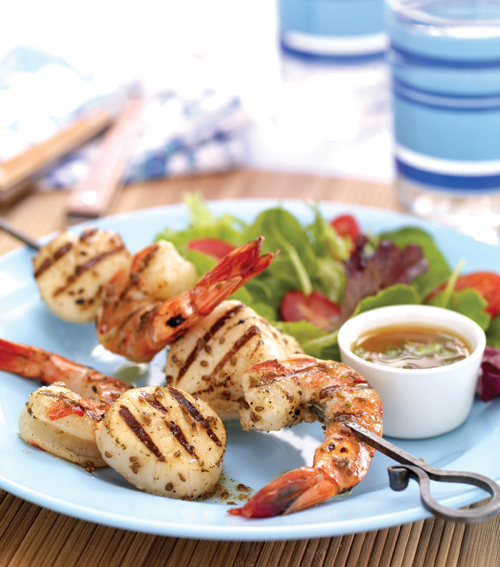Spice Buyers Journal: Anise

|
| Anise Seasoned Shrimp and Scallops |
DESTINATION: TURKEY
ANISE Field Report
McCormick’s chief spice buyer, Al Goetze, travels to exotic ports-of-call, trekking across varied terrain in search of the finest herbs and spices. In this journal entry, Al invites us inside his recent trip to Turkey, where he inspected the anise crop.
Summer is the perfect time to enjoy anise seed. Its refreshing flavor is an ideal partner to the bold tastes of summer grilling. Though most associated with holiday baking, anise seed’s versatility has made it a popular ingredient year-round. I have just returned from Turkey where I took an early look at the forthcoming crop. Anise seed is indigenous to Eastern Mediterranean countries, including Greece, Turkey, Syria, and Egypt, and Turkey has one of the larger crops in the region.
My trip began at the Izmir Airport, where my business partner, Aysen, greeted me to embark on the 300-kilometer (200 mile) drive to the interior portion of Turkey. Most anise seed is cultivated in the southwestern towns of Denizli, Burdur, and Isparta. Like much of Turkey, this is beautiful country – a combination of farmland, lakes and mountainous terrain, with as many colors as an artist’s palette. Along the way, Aysen and I discussed this year’s crop projections. She told me that the harvest is expected to be healthy, which is great news because anise is definitely a flavor in demand.
After several hours of negotiating the narrow, winding roads, we finally entered the growing region. Cresting a hill, we came upon the farms, which are relatively small, and spread over flat parcels of land in and around the mountains. Like cumin, anise seed is a rotation crop, grown with barley, corn and wheat. The fields are sown in February and March, just prior to the arrival of the heavy rainy season. Nearing the time of the harvest, which is when I arrived, the weather turns sunny, very warm and dry.
The anise plant, Pimpinella anisum, or anason, as it’s known in Turkey, grows rapidly to a height of two to three feet and has beautiful, circular, feathery leaves and a canopy of small white flowers. If you close your eyes and picture the Queen Anne’s Lace that grows along the roadside in North America, you’ll have an idea of what a flowering anise plant looks like. The flowers are eventually replaced by seeds, which are crescent-shaped, strongly aromatic and full of licorice flavor and piney undertones, similar to fennel. The anise plant belongs to the same family of seed-producing plants as dill, caraway, coriander, cumin, and fennel.
Typically, the anise seed harvest begins in early June and continues into August. As we drove deeper into the growing areas, we came upon a field where harvest had begun earlier than expected. It was quite interesting to see the cut plants, hand-piled in the shape of teepees, sun drying in the fields. Once the drying is complete, farmers separate the seeds from the stalks using a basic threshing machine.
One of the most fascinating things, I find, about anise is the fact that farmers have been cultivating and harvesting the seed this way for centuries. Anise has been traced back to 1500 B.C. It was believed to aid digestion and was also a breath freshener, perhaps one reason for its prevalence in desserts and after-dinner drinks, such as Raki, the national beverage of Turkey.
After we finished inspecting the fields, Aysen and I stopped in a nearby village for dinner. There, we were treated to some wonderful lamb and fish dishes, and, of course, cookies – all made with local anise seeds. And, as is the custom, we toasted this year’s bountiful crop with Raki on the rocks.
Here are two of my favorite ways to enjoy anise in the summer – as a refreshing addition to grilled shrimp and scallops, and with fresh berries in a ricotta cream, a step up from the summer standby – strawberries and whipped cream.
I look forward to sharing my next journey with you this fall – a glimpse into my trip to Saigon to inspect the cinnamon crop. In the meantime, I wish you a flavorful summer!
McCormick® is a registered trademark of McCormick and Company, Hunt Valley, MD
